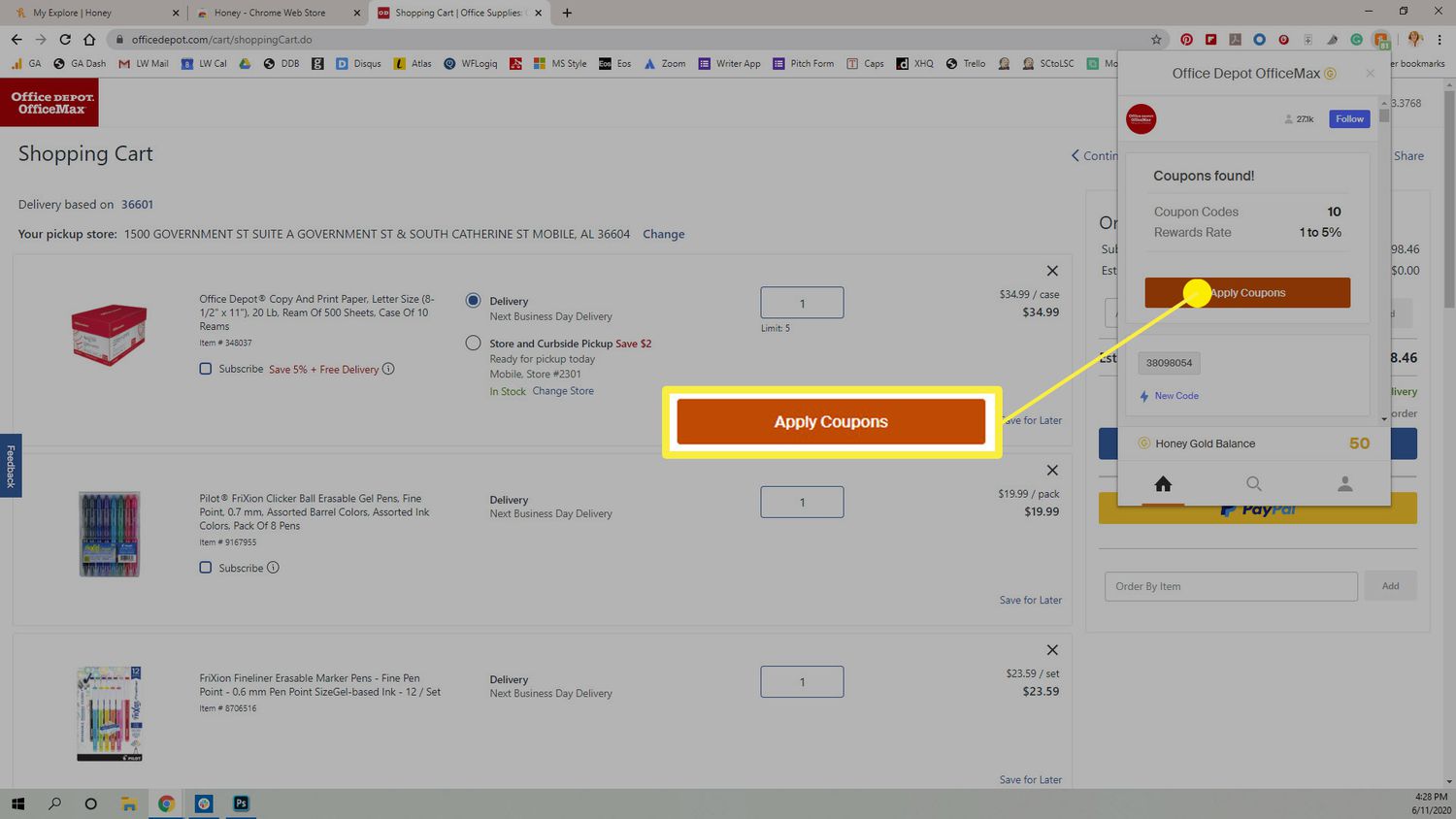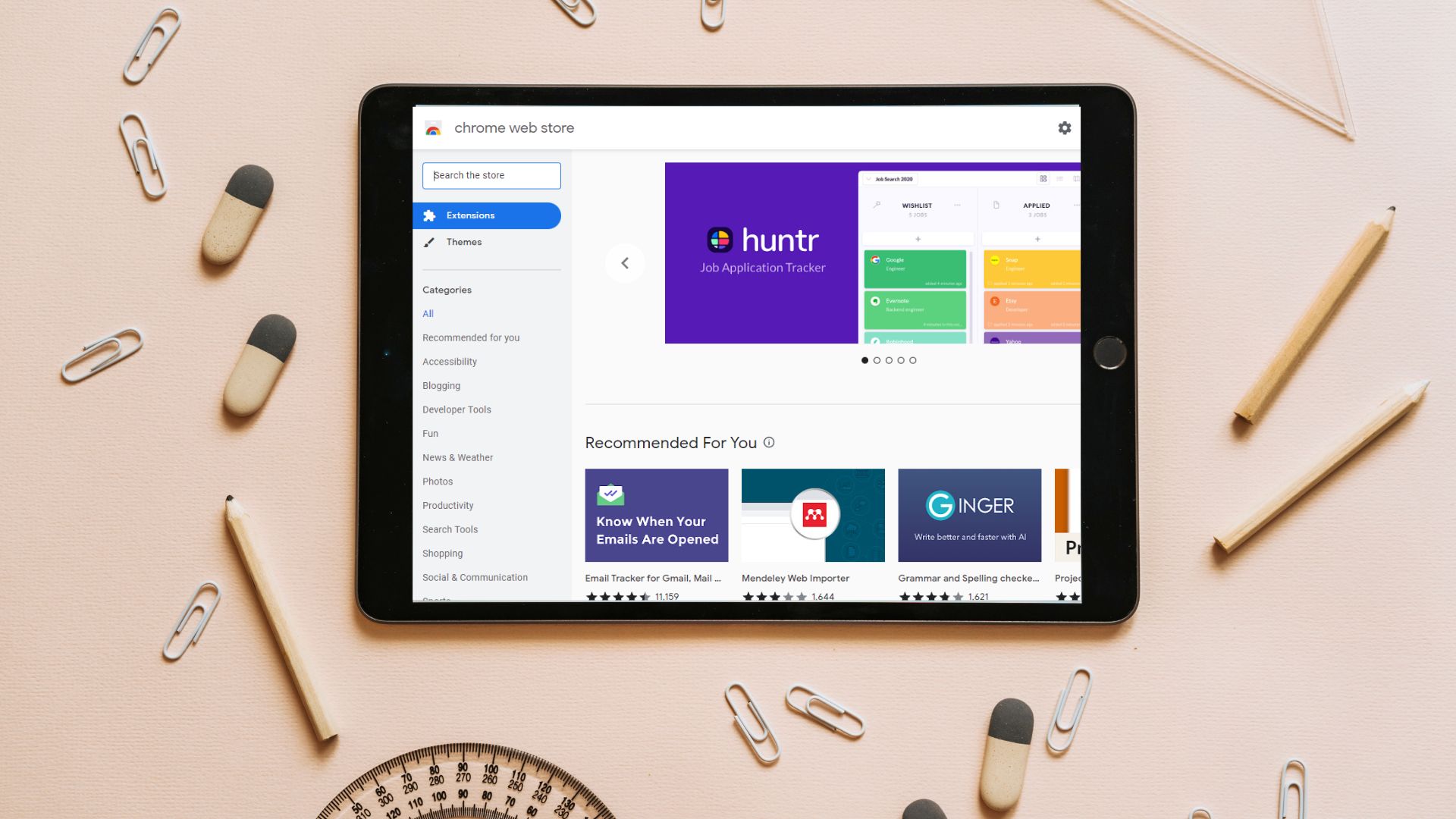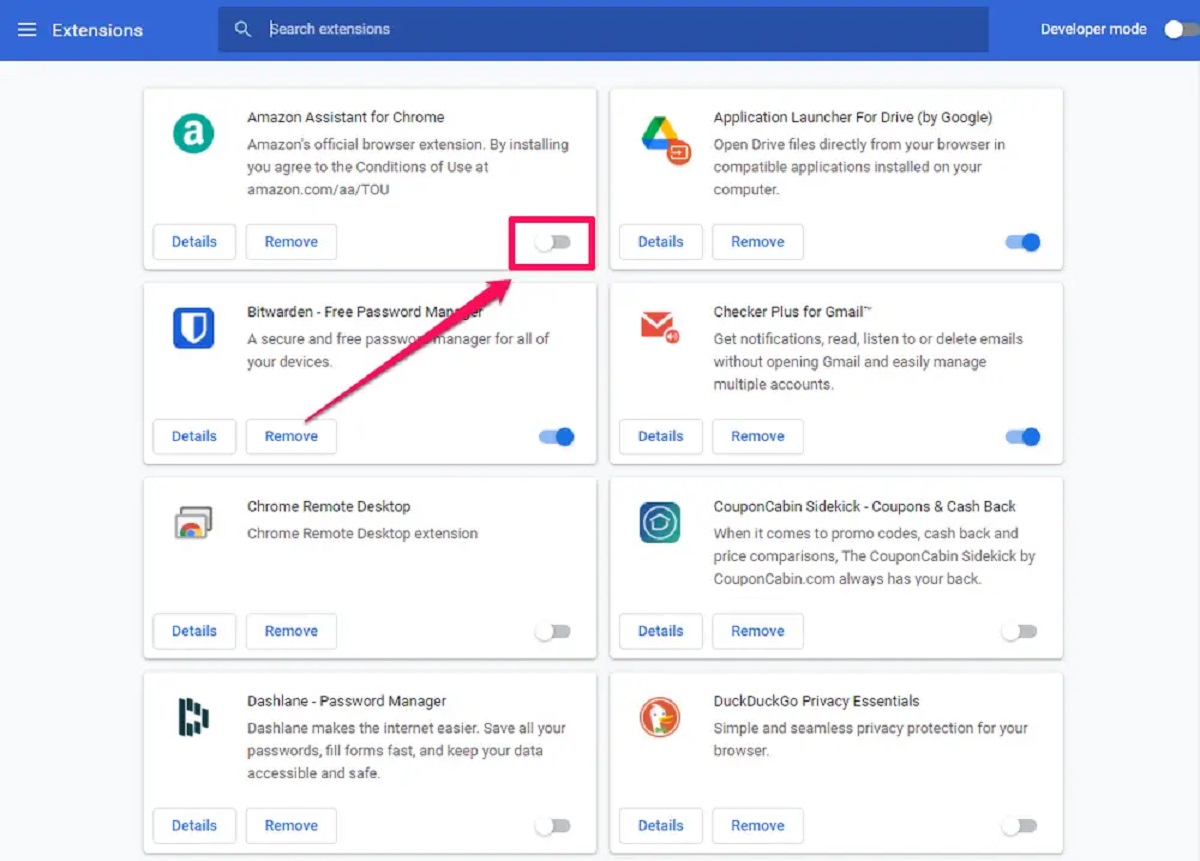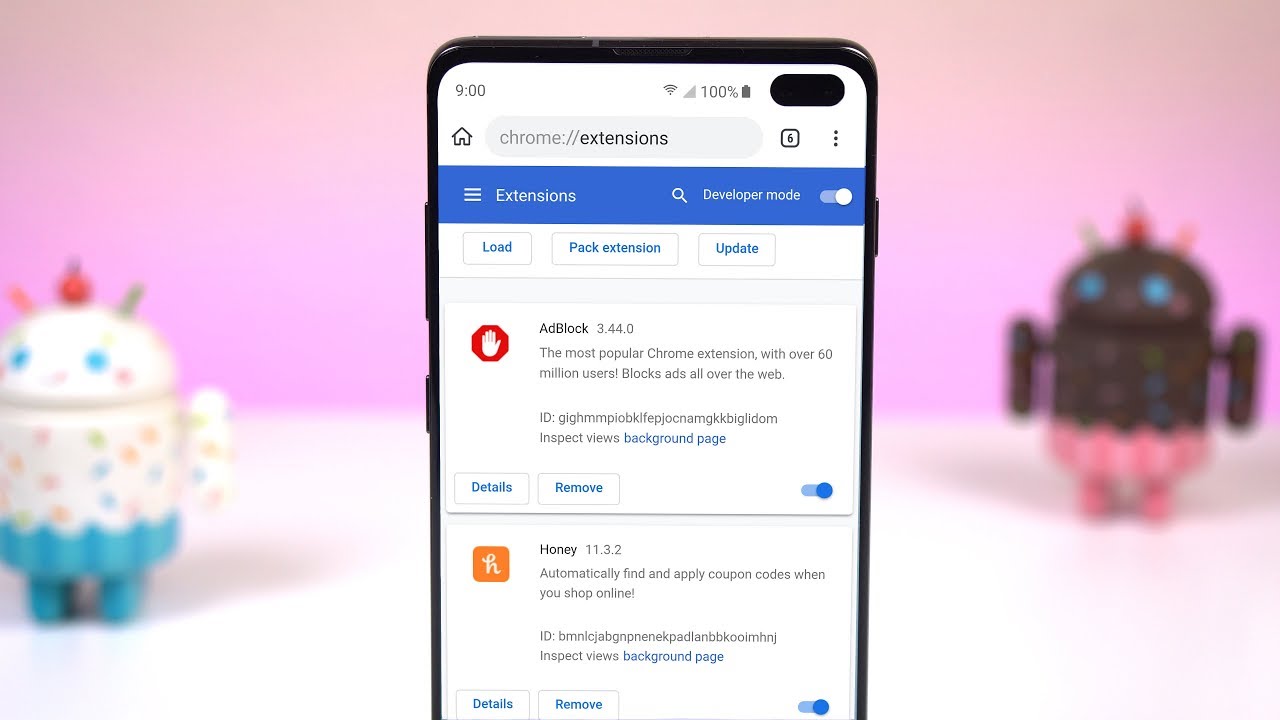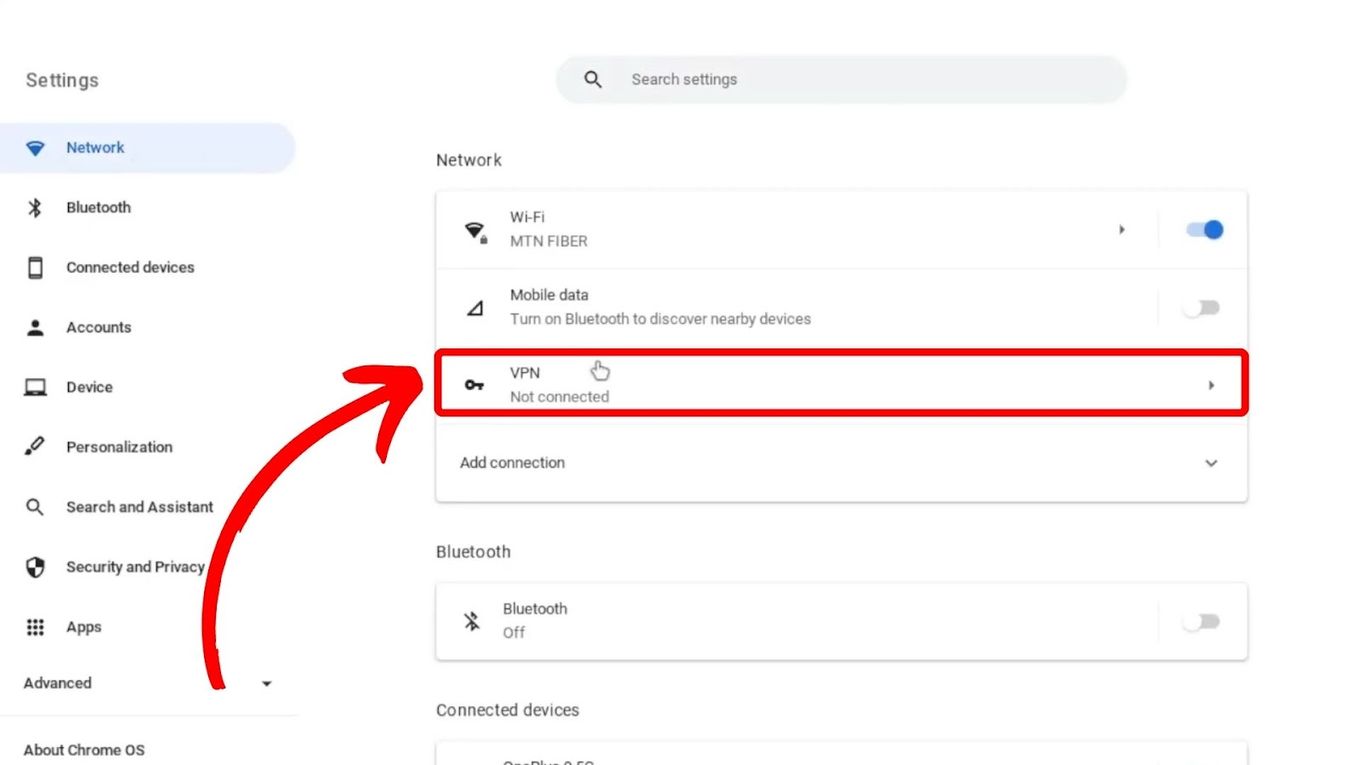Introduction
Chrome extensions have become an integral part of our browsing experience, offering enhanced functionality and customization options to millions of users worldwide. These small software programs, developed by independent developers or companies, can add features, modify website appearance, and automate tasks within the Chrome browser.
With the growing popularity of Chrome extensions, many developers are wondering how to monetize their creations. After all, creating and maintaining a quality extension takes time and effort. Thankfully, there are several ways for developers to make money from their Chrome extensions.
In this article, we will explore the different ways developers can generate revenue through their Chrome extensions. From selling the extension itself to implementing in-app purchases, advertising deals, subscriptions, and more, we will delve into the various monetization strategies that can help developers turn their passion for coding into a profitable venture.
Whether you’re an aspiring developer looking to monetize your Chrome extension or simply curious about how these developers make money, this article will provide valuable insights into this thriving industry.
So, let’s dive into the world of Chrome extensions and uncover the secrets behind their revenue-generating potential.
Understanding Chrome Extensions
Before we explore the ways Chrome extensions make money, let’s take a moment to understand what exactly a Chrome extension is. Essentially, a Chrome extension is a small software program that adds functionality and enhances the user experience within the Chrome web browser.
These extensions are built using web technologies such as HTML, CSS, and JavaScript, and they can modify the appearance of websites, automate certain tasks, and add new features to the browser. They are installed directly into the Chrome browser and are accessible through the extensions toolbar.
Chrome extensions are designed to enhance the browsing experience by providing users with additional tools and capabilities. They can help with tasks like productivity, social media management, ad-blocking, language translation, and more. The versatility and customization options offered by Chrome extensions make them highly popular among users.
Developers have the freedom to create extensions for both personal use and public distribution through the Chrome Web Store. Extensions can range from simple tweaks to complex applications depending on the developer’s goals and the needs of the user base.
To install a Chrome extension, users can simply visit the Chrome Web Store, search for the desired extension, and click the “Add to Chrome” button. Once installed, the extension will appear in the browser’s toolbar, ready to provide its intended functionality.
Extensions can be developed by individual developers, small teams, or even large companies. The Chrome Web Store serves as a platform for developers to showcase and distribute their extensions to a large user base. With millions of users relying on Chrome extensions for various purposes, the market for these tools is vast and offers significant monetization potential.
Now that we have a clear understanding of what Chrome extensions are and how they function, let’s explore the different ways developers can monetize their creations.
Why Developers Create Chrome Extensions
Developers are driven to create Chrome extensions for a variety of reasons, ranging from personal passion to financial motivation. Let’s dive into some of the key reasons why developers dedicate their time and effort to building these valuable tools.
1. Problem Solving: Many developers create Chrome extensions to address specific challenges or pain points they encounter while browsing the web. They identify a need or inefficiency and set out to create a solution that can improve the user experience for themselves and others.
2. Personal Growth: Developing Chrome extensions allows developers to enhance their coding skills and expand their knowledge. It provides an opportunity to experiment with new technologies and frameworks, pushing boundaries and continuously learning in the process.
3. Contribution to the Community: Chrome extensions can have a significant impact on the browsing experience of millions of users. Developers find fulfillment in knowing that their creations can make a positive difference in people’s lives, even in small ways.
4. Entrepreneurial Opportunities: Chrome extension development serves as a gateway to entrepreneurial ventures. Developers can create extensions that solve widespread problems and offer unique functionality, opening doors to potential partnerships, sponsorships, or acquisitions.
5. Financial Incentives: Monetization is undoubtedly a driving factor for many developers. With the right strategy, Chrome extensions can generate a steady income stream, allowing developers to earn money from their coding skills and dedication.
6. Flexibility and Independence: Developing Chrome extensions offers developers the flexibility to work on their terms. They can choose their projects, set their own schedules, and work remotely if desired. This autonomy appeals to developers seeking a more independent and fulfilling work experience.
7. Community Engagement: The Chrome extension development community is vibrant and supportive, with opportunities for collaboration, knowledge-sharing, and feedback. Developers engage with fellow creators, users, and industry experts, fostering a sense of camaraderie and personal growth.
By understanding the motivations behind developers creating Chrome extensions, we can appreciate the passion and dedication that goes into building these valuable tools. It is a combination of personal fulfillment, problem-solving, and the potential for financial success that drives developers to bring innovative extensions to the Chrome Web Store.
Different Ways Chrome Extensions Make Money
Developers have a variety of methods to monetize their Chrome extensions and turn their passion into a profitable endeavor. Let’s explore some of the most common ways developers generate revenue from their creations:
- Selling the Extension: One straightforward approach is to sell the extension itself. Developers can set a price for their extension on the Chrome Web Store, offering users the option to purchase and install it. This method appeals to developers who believe their extension provides unique value that users are willing to pay for.
- In-App Purchases: Another popular monetization strategy is to offer in-app purchases within the extension. This allows developers to provide additional features, premium content, or unlock advanced functionalities for a fee. In-app purchases can enhance the user experience while generating revenue for the developer.
- Advertising and Sponsorship Deals: Many developers monetize their extensions through advertising and sponsorship agreements. This involves displaying ads within the extension or partnering with brands to promote their products or services. Developers earn revenue based on clicks, impressions, or successful referrals generated through their extension.
- Subscription Model: Some extensions offer subscription plans, allowing users to access premium features or receive ongoing updates and support for a recurring fee. This model provides developers with a steady stream of income and encourages them to continue improving and maintaining their extension.
- Freemium Model: The freemium model combines free basic functionality with optional paid upgrades. Developers offer a limited version of their extension for free, enticing users to upgrade to a premium version for additional features and enhanced performance. This approach widens the user base while providing opportunities for upselling.
- Data Collection and Analytics: Some developers collect anonymized user data or implement analytics tools within their extensions. This data can be aggregated and analyzed to provide valuable insights for businesses or advertisers. Developers may earn revenue by selling this data or partnering with companies interested in leveraging the insights.
- Affiliate Marketing: By integrating affiliate links within their extensions, developers have the opportunity to earn commissions on sales generated through these links. For example, an extension that recommends products or services can include affiliate links, and developers earn a percentage of the sales made through those links.
- Crowdfunding and Donations: Developers can leverage crowdfunding platforms or accept donations from users who appreciate their work. This approach allows developers to fund ongoing development, support, and maintenance of the extension, while also cultivating a loyal user community.
These are just some of the many ways developers monetize their Chrome extensions. It’s important to choose a strategy that aligns with the extension’s value proposition, target audience, and the developer’s long-term goals. By employing the right monetization approach, developers can not only generate revenue but also sustain and grow their extension in the competitive Chrome Web Store ecosystem.
Selling the Extension
One of the straightforward ways developers monetize their Chrome extensions is by selling the extension itself. This monetization strategy involves setting a price for the extension on the Chrome Web Store, allowing users to purchase and install it.
The decision to sell an extension depends on several factors, including the uniqueness of the functionality it offers, the target audience’s willingness to pay, and the developer’s confidence in the extension’s value proposition. Some developers believe their extension provides such significant benefits that users will be willing to invest in it.
When selling an extension, developers should carefully consider its pricing strategy. They need to strike a balance between setting a fair price that reflects the extension’s value and ensuring it is affordable for the target audience. Additionally, developers can experiment with temporary price reductions or promotional offers to attract new users and generate interest in the extension.
By selling the extension, developers can generate direct revenue from the initial installation and purchase. However, it’s important to note that selling the extension might limit its reach compared to free alternatives. Users may be hesitant to pay for an extension without the ability to test it or compare it with similar free options.
Furthermore, selling an extension often comes with the expectation of ongoing updates and support. Developers need to be prepared to provide regular updates, bug fixes, and customer support to ensure customer satisfaction and maintain the extension’s reputation.
Selling the extension is particularly suitable for developers who create niche extensions that offer unique functionalities or address specific pain points. In such cases, users may perceive the value offered by the extension and be more willing to pay for it.
Overall, selling the extension provides developers with a direct way to monetize their creation. By establishing a fair and attractive pricing strategy, developers can generate revenue from users who recognize the value and benefits of the extension and are willing to invest in it.
In-App Purchases
In-app purchases are a popular monetization strategy for developers to generate revenue from their Chrome extensions. This approach involves offering additional features, premium content, or advanced functionalities within the extension that users can unlock by making a purchase.
With in-app purchases, developers provide a portion of their extension for free, allowing users to experience basic functionality before enticing them to upgrade to a premium version. This model enables developers to cater to a broader user base while offering enhanced capabilities to those who choose to make a purchase.
Developers can design their in-app purchases creatively, appealing to users’ needs and preferences. For example, a productivity extension might offer a basic set of features for free but provide advanced features, enhanced customization options, or an ad-free experience as in-app purchases.
When implementing in-app purchases, developers need to carefully consider the pricing and value proposition of the upgraded features. The pricing should align with the additional benefits offered and be appealing to the target audience. It’s essential to strike a balance between providing value to users and generating a sustainable revenue stream.
In-app purchases can be a source of recurring revenue for developers, especially if they continually update and enhance the premium features. Regularly adding new functionalities or offering exclusive content helps to retain existing customers and attract new ones.
It’s crucial for developers to ensure a seamless and user-friendly in-app purchase experience. The process should be straightforward, with clear information about the benefits and costs of the upgrade. Additionally, developers should provide reliable customer support to address any concerns or issues related to in-app purchases.
While in-app purchases can be a lucrative monetization strategy, it’s important to strike a balance and avoid overly aggressive upselling or making essential functionalities only available through paid upgrades. Users should feel that the free version of the extension provides value and that the in-app purchases enhance the experience rather than restrict it.
In summary, in-app purchases offer developers a way to provide additional value to users while generating revenue from their Chrome extensions. By carefully designing the premium features and maintaining a positive user experience, developers can leverage in-app purchases as a sustainable monetization strategy.
Advertising and Sponsorship Deals
Advertising and sponsorship deals are a common monetization method for Chrome extensions. This strategy involves collaborating with brands or displaying ads within the extension to generate revenue.
Developers have several options when it comes to incorporating advertising into their extensions. They can display banner ads, interstitial ads, or sponsored content within the extension’s user interface. These advertisements can be targeted based on user demographics, browsing behavior, or specific interests, ensuring relevance and maximizing their effectiveness.
One approach is to partner with advertising networks or platforms that provide developers with ad content and handle the monetization process. The developer earns revenue based on impressions (the number of times the ad is displayed) or clicks (when users interact with the ad).
An alternative method is entering sponsorship deals with brands or businesses that align with the extension’s target audience. These partnerships may involve promoting products or services within the extension or featuring sponsored recommendations. In return, the developer receives compensation either through a flat fee, a percentage of sales generated, or other mutually agreed-upon terms.
It is crucial for developers to carefully select advertising or sponsorship deals that align with their extension’s purpose and audience. The ads should be relevant and add value to the user experience rather than disrupt it. Striking the right balance between ads and the extension’s core functionality is important to maintain user satisfaction.
Transparency is also key when integrating ads or sponsored content. Developers should clearly disclose that the extension includes advertisements and provide clear information about sponsored recommendations. This ensures transparency and fosters trust with users.
To optimize revenue from advertising and sponsorship deals, developers can analyze user data and user engagement metrics to understand user preferences and deliver more targeted and relevant ads. Continuous monitoring and refinements based on user feedback can enhance the overall ad experience and increase revenue potential.
When implementing advertising and sponsorship deals, developers should also consider the impact on the extension’s performance. Ads should be optimized for load times and not negatively affect the user experience. It’s crucial to strike a balance between monetization and maintaining a smooth and seamless browsing experience for users.
In summary, advertising and sponsorship deals offer developers an effective way to monetize their Chrome extensions. By carefully selecting relevant and non-intrusive ads or sponsored content and ensuring transparency, developers can generate revenue while providing value to their users.
Subscription Model
The subscription model is a popular monetization strategy for Chrome extensions, providing developers with a recurring revenue stream. With this approach, developers offer users the option to subscribe to the extension for a recurring fee in exchange for access to premium features, ongoing updates, enhanced customer support, or exclusive content.
Developers can implement different subscription tiers or levels, each offering various benefits and pricing options. For example, a basic subscription may provide access to essential features, while a higher-tier subscription may unlock advanced functionalities or additional services.
When implementing a subscription model, it’s crucial to provide value that justifies the recurring fee. Developers should continuously update and enhance the extension, delivering new features or exclusive content to keep subscribers engaged and satisfied.
To maximize the appeal and perceived value of the subscription, developers can offer free trials or introductory pricing for new users. This allows users to test the extension and experience the benefits before committing to a subscription.
Communication and transparency play a vital role in the success of a subscription model. Developers should clearly outline the features and benefits available to subscribers and provide transparent information about pricing, renewal terms, and cancellation policies.
Additionally, developers should ensure a seamless and user-friendly subscription management process. This includes allowing users to easily upgrade, downgrade, or cancel their subscription within the extension, as well as providing reliable customer support for any subscription-related inquiries or issues.
The subscription model can provide a steady and predictable revenue stream for developers, allowing them to invest in ongoing development, maintenance, and support. However, it’s important to strike a balance between offering enough value to justify the subscription fee and not alienating users who prefer to use free alternatives.
Developers should continually analyze user feedback and usage patterns to understand user preferences and optimize their subscription offerings accordingly. This includes monitoring churn rate (the rate at which subscribers cancel their subscription) and implementing strategies to retain existing subscribers and attract new ones.
In summary, the subscription model provides developers with a recurring revenue stream while offering users access to premium features, ongoing updates, and exclusive content. By continuously adding value and maintaining transparency, developers can successfully monetize their Chrome extensions through subscriptions.
Freemium Model
The freemium model is a popular and effective monetization strategy for Chrome extensions. It involves offering a basic version of the extension for free, while providing additional premium features or enhanced functionalities as an upgrade for a fee.
The key idea behind the freemium model is to provide value to a wide user base while enticing a portion of those users to upgrade to a paid version. The free version acts as a marketing tool, allowing users to experience the core functionality and benefits of the extension without any upfront cost.
Developers need to strike a balance between what is available for free and what is offered as premium content or features. The free version should provide enough value to attract and engage users while leaving room for additional, compelling features that users would be willing to pay for.
One common approach is to provide limited functionality in the free version, giving users a taste of what the extension can offer. This can include advanced features or enhanced customization options that are only available to premium users.
When implementing the freemium model, developers should ensure that the upgrade process is seamless and user-friendly. They can offer in-app prompts or notifications, inviting users to explore the premium features and providing an easy way to upgrade to the paid version directly within the extension.
Pricing is a critical consideration when using the freemium model. Developers need to carefully analyze the value offered by the premium features and set an attractive price point that entices users to upgrade without being prohibitively expensive.
Regular updates and continued development of the extension are essential to keep users engaged and interested in the premium features. Developers should listen to user feedback and continuously improve the extension, both in the free and premium versions, to deliver value and maintain customer satisfaction.
The freemium model also provides opportunities for upselling and cross-selling. Once users have upgraded to the premium version, developers can offer additional products or services related to the extension, further boosting revenue potential.
Overall, the freemium model allows developers to reach a broad user base, provide value to all users, and generate revenue from those who choose to upgrade to the premium version. By carefully balancing the features and pricing, developers can successfully monetize their Chrome extensions while fostering user engagement and satisfaction.
Data Collection and Analytics
Data collection and analytics can be utilized as a monetization strategy for Chrome extensions. Developers can incorporate mechanisms within their extensions to collect anonymized user data, which can then be analyzed and utilized to provide valuable insights for businesses or advertisers.
Through the collection of user data, developers gain access to information such as browsing patterns, user demographics, preferences, and usage behavior. This information can be aggregated, analyzed, and presented in a way that can help businesses make informed decisions, improve their products or services, and optimize their marketing strategies.
Developers can partner with companies that are interested in leveraging the insights provided by the user data. These partnerships can take various forms, including licensing the data, providing access to anonymized datasets, or integrating advertising platforms that leverage the collected data to deliver more targeted advertisements.
It is essential for developers to prioritize user privacy and ensure that the data collected is anonymized and handled responsibly. Transparency and user consent are crucial, and developers should clearly communicate what data is being collected, how it is being used, and give users the option to opt-out if they are uncomfortable sharing their data.
Analytics tools within the extension can also provide valuable data to developers themselves. By tracking user interactions, feature usage, and other metrics, developers can gain insights into how users are engaging with their extensions and identify areas for improvement or potential opportunities for monetization.
When leveraging data collection and analytics as a monetization strategy, developers need to ensure that the collection and utilization of data comply with relevant privacy regulations. This includes adhering to guidelines such as the General Data Protection Regulation (GDPR) to protect user privacy and ensure the ethical use of collected data.
Data collection and analytics as a monetization strategy may not be suitable for all types of extensions, as it often requires a large user base to generate meaningful insights. However, for extensions that attract a significant number of active users, this strategy can present opportunities for generating revenue while providing valuable data-driven insights.
In summary, data collection and analytics can serve as a monetization strategy for Chrome extensions. By responsibly collecting and analyzing anonymized user data, developers can offer valuable insights to businesses and advertisers while prioritizing user privacy and maintaining transparency.
Affiliate Marketing
Affiliate marketing is a popular monetization strategy for Chrome extensions. This approach involves partnering with brands and businesses as an affiliate and earning commissions on sales or referrals generated through the extension.
Developers can include affiliate links within their extensions that direct users to products or services relevant to the extension’s niche or target audience. When users make a purchase or sign up for a service through these links, the developer earns a percentage of the sale or a fixed commission.
One advantage of affiliate marketing is that developers can choose products or services that align with the interests and needs of their users. By recommending relevant and high-quality offerings, developers can build trust with users and increase the likelihood of generating sales or referrals.
To implement affiliate marketing effectively, developers should research and identify reputable affiliate programs or networks that offer products or services relevant to their extension. They should focus on selecting partners who provide fair commission rates, reliable tracking systems, and good customer support.
Transparency is crucial when employing affiliate marketing in Chrome extensions. Developers should clearly disclose that they are an affiliate and that they may earn commissions from the recommended products or services. It’s important to maintain trust with users by providing honest recommendations and ensuring that the affiliate links do not disrupt the user experience.
Developers can optimize their affiliate marketing efforts by strategically placing affiliate links within the extension. For example, they can include product recommendations within relevant features or offer discounts to incentivize users to make a purchase through their affiliate links.
Analytics and tracking tools can help developers monitor affiliate marketing performance. They can analyze metrics such as click-through rates, conversion rates, and revenue generated through affiliate links. This data enables developers to optimize their strategies, identify successful campaigns, and refine their approach to affiliate marketing.
It’s worth noting that while affiliate marketing can be a lucrative monetization strategy, developers should be cautious not to overwhelm users with excessive affiliate links or compromise the integrity and trust of their extension. Striking a balance between providing value to users and generating affiliate commissions is essential for long-term success.
In summary, affiliate marketing offers developers the opportunity to monetize their Chrome extensions by partnering with brands and earning commissions on sales or referrals. By selecting relevant partners, maintaining transparency, and optimizing their affiliate marketing efforts, developers can generate revenue while providing value to their users.
Crowdfunding and Donations
Crowdfunding and donations provide an alternative monetization strategy for developers seeking to generate revenue for their Chrome extensions. This approach involves reaching out to the user community for financial support, either through crowdfunding platforms or direct donations.
Developers can create crowdfunding campaigns on platforms such as Kickstarter, Indiegogo, or Patreon to generate funding for the development and maintenance of their extension. These campaigns allow users and supporters to contribute funds in exchange for exclusive rewards or early access to new features.
Crowdfunding campaigns provide developers with an opportunity to showcase their extension’s potential, gather feedback from early adopters, and create a loyal community around their product. They can leverage the power of social media, online communities, and targeted marketing to spread the word about their campaign and attract backers.
In addition to crowdfunding campaigns, developers can also opt to accept direct donations from users who appreciate and value their extension. This approach relies on the goodwill and generosity of users who wish to contribute financially to the ongoing development and improvement of the extension.
Developers can incorporate donation options within the extension itself, making it easy for users to support their work with a one-time or recurring donation. They can also provide platforms, such as PayPal or Patreon, for users to contribute funds outside of the Chrome Web Store.
To encourage donations, developers can highlight the benefits of supporting their extension, such as the ability to fund continued development, maintain free access for other users, or receive exclusive updates or features. They can also express gratitude and acknowledge donors publicly to foster a sense of community and reciprocity.
While crowdfunding and donations can be a viable way to generate revenue, developers need to manage their expectations and ensure transparency with their backers or donors. They should clearly communicate the goals of the campaign, timeframes for updates, and how the funds will be utilized to maintain trust and accountability.
Developers should also consider offering transparency into the financial aspects of their extension. This can include sharing information about how revenue from crowdfunding or donations is being allocated, such as covering development costs, hosting fees, or supporting ongoing updates and improvements.
In summary, crowdfunding and donations provide developers with an opportunity to monetize their Chrome extensions through the support and contribution of their user community. By leveraging crowdfunding campaigns or direct donation options, developers can generate revenue while fostering a sense of collaboration and appreciation from their users.
Conclusion
Monetizing Chrome extensions allows developers to turn their passion for coding into a profitable endeavor. With a variety of monetization strategies available, developers can generate revenue while providing value to their users.
We explored several popular methods for monetizing Chrome extensions, including selling the extension itself, implementing in-app purchases, leveraging advertising and sponsorship deals, offering subscriptions, adopting the freemium model, utilizing data collection and analytics, implementing affiliate marketing, and seeking funding through crowdfunding and donations.
The choice of a monetization strategy depends on various factors, such as the extension’s unique value proposition, target audience, and the developer’s long-term goals. Developers should carefully consider the pros and cons of each strategy and choose the approach that aligns with their vision and user base.
Transparency, user experience, and value should be at the forefront of any monetization strategy. Developers must maintain user trust by providing clear information about costs, privacy practices, and any third-party affiliations. A seamless user experience should be prioritized, ensuring that the extension’s core functionality remains intact and any monetization efforts enhance the user’s experience rather than disrupt it.
Successful monetization also requires continuous innovation and improvement. Developers should stay attuned to user feedback, monitor user engagement metrics, and adapt their monetization strategies accordingly. By focusing on delivering value and meeting the evolving needs of users, developers can build a loyal user base and increase revenue potential.
In a competitive ecosystem, developers must strike a delicate balance between monetization and maintaining a positive user experience. By finding the right approach and optimizing their monetization strategies, developers can not only generate revenue from their Chrome extensions but also create sustainable and thriving products that enhance the browsing experience for millions of users worldwide.









